Technology
7 lucky people prove Apple Watch can save lives
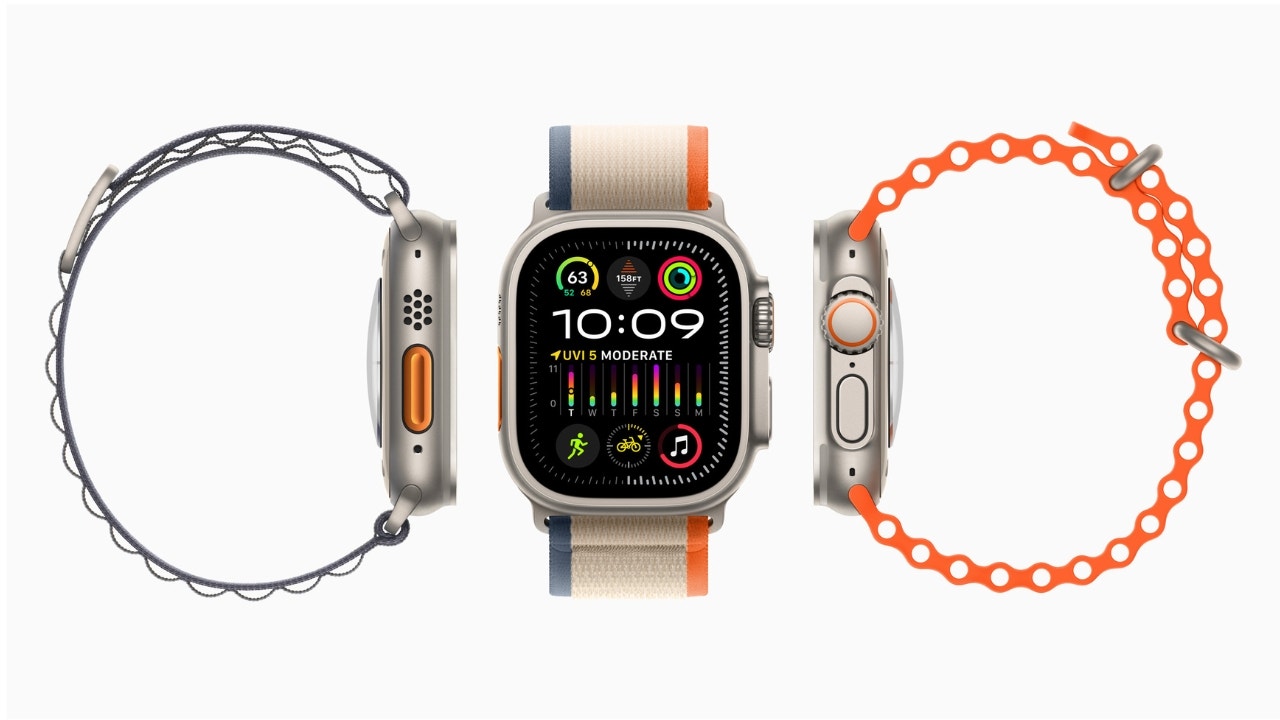
In 1989, a catchphrase from a medical alert company, “I’ve fallen, and I can’t get up,” captured public attention.
Little did we know this concept of emergency assistance would evolve so dramatically with technology.
By 2018, the Apple Watch Series 4 introduced Fall Detection, a feature that has since become integral to late model Apple Watch SE through Apple Watch Series 9 and Apple Watch Ultra series, playing a crucial role in health emergencies.
CLICK TO GET KURT’S FREE CYBERGUY NEWSLETTER WITH SECURITY ALERTS, QUICK VIDEO TIPS, TECH REVIEWS, AND EASY HOW-TO’S TO MAKE YOU SMARTER
Fall Detection on Apple Watch. (Apple)
MORE: 8 WAYS TO KEEP SOMEONE YOU KNOW WHO LIVES ALONE PROTECTED
Real-world impact of Apple Watch life-saving features to save seven lucky people
The life-saving potential of the Apple Watch’s Fall Detection has been proven in various real-life scenarios. Here are just a few of some recent instances:
Averting hypothermia: A man at risk of hypothermia activated his Apple Watch’s Emergency SOS, leading to a prompt and life-saving response from emergency services.
Rescuing a senior: A 78-year-old man’s Apple Watch detected a significant fall, leading to immediate emergency aid and potentially saving his life.
Car accident rescue: Kacie Anderson, with her baby, relied on her Apple Watch to call for help after a severe car accident, highlighting the watch’s critical role in emergencies.
Health alert: Heather Hendershot received an important health warning from her Apple Watch, emphasizing its capabilities beyond fall detection.
Technology reporter’s experience: Toralv Østvang’s Apple Watch alerted emergency services after detecting his immobility from a fall, showcasing its importance in emergency response by contacting the police, who contacted his wife and then told the paramedics where to find him.
Hotel room incident: Bayla Belle Christianson’s Apple Watch, with its Fall Detection, summoned help after she lost consciousness, underscoring the feature’s life-saving potential.
How the Apple Watch can sense a hard fall using sensors and algorithms
The Apple Watch has a feature that can detect if you fall hard by using the following components:
- The accelerometer and gyroscope sensors on the watch measure the speed and direction of your wrist movement.
- A custom algorithm on the watch analyzes the data from the sensors and compares it with the typical patterns of a hard fall.
- If the algorithm determines that you have fallen hard, it will activate the alert feature on the watch by vibrating, making a sound, and showing you an alert on the screen.
- You can either call emergency services or dismiss the alert by pressing the Digital Crown, tapping Close, or tapping “I’m OK.”
- If your watch sees that you are moving, it will not call emergency services automatically. It will wait for you to respond to the alert.
- If your watch sees that you are not moving for about a minute, it will call emergency services automatically and send a message to your emergency contacts with your location. Your watch gets your emergency contacts from your Medical ID.
Make sure your age is set correctly on your Apple Watch
MOST VIRAL SUPER BOWL LVII ADS
This feature is automatically enabled for users who are 55 years old or older, based on the age they entered when they set up their Apple Watch or in the Health app. To make sure that this feature works correctly, check that your Medical ID and your Health Profile have your correct age. This feature is not available for users who are under 18 years old.
Set up your Medical ID and add emergency contacts
- Open Settings on your iPhone
- Then tap Health
- Next, click Medical ID
- Tap Edit in the upper right corner of the screen
- Enter your date of birth and other health information
- To add an emergency contact, tap the add (+) button under emergency contacts. Tap a contact, then add their relationship
- To make your Medical ID available from the Lock Screen, toggle on Show When Locked. In an emergency, this gives information to people who want to help.
- To share your Medical ID with emergency responders, turn on Share During Emergency Call. When you make a call or send a text to emergency services on your iPhone or Apple Watch, your Medical ID will automatically be shared with emergency services.
- Tap Done
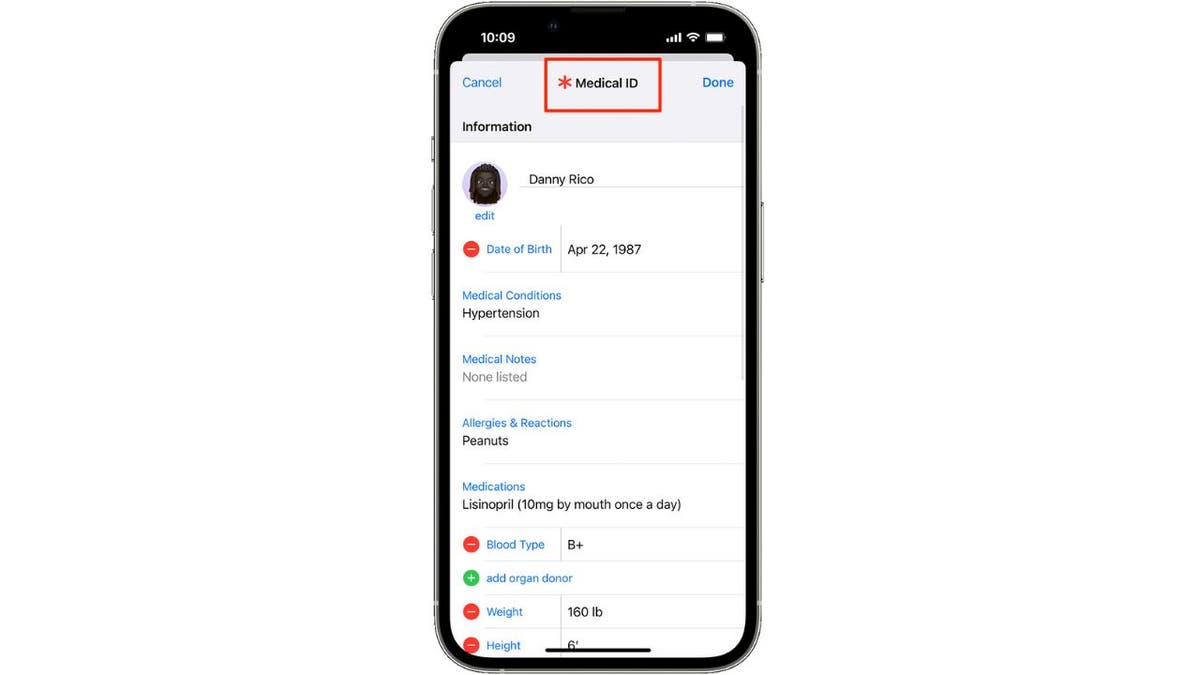
Medical ID on an iPhone. (Apple)
ER VISIT TIMES: HERE’S HOW LONG PATIENTS SPEND IN EMERGENCY ROOMS IN EACH STATE
Set up your Health Profile
- On your iPhone, open the Health app
- Tap the Summary tab on the bottom left of the screen, then tap your profile picture in the upper right corner
- Tap Health Details, then tap Edit
- Add your information, like your date of birth and blood type
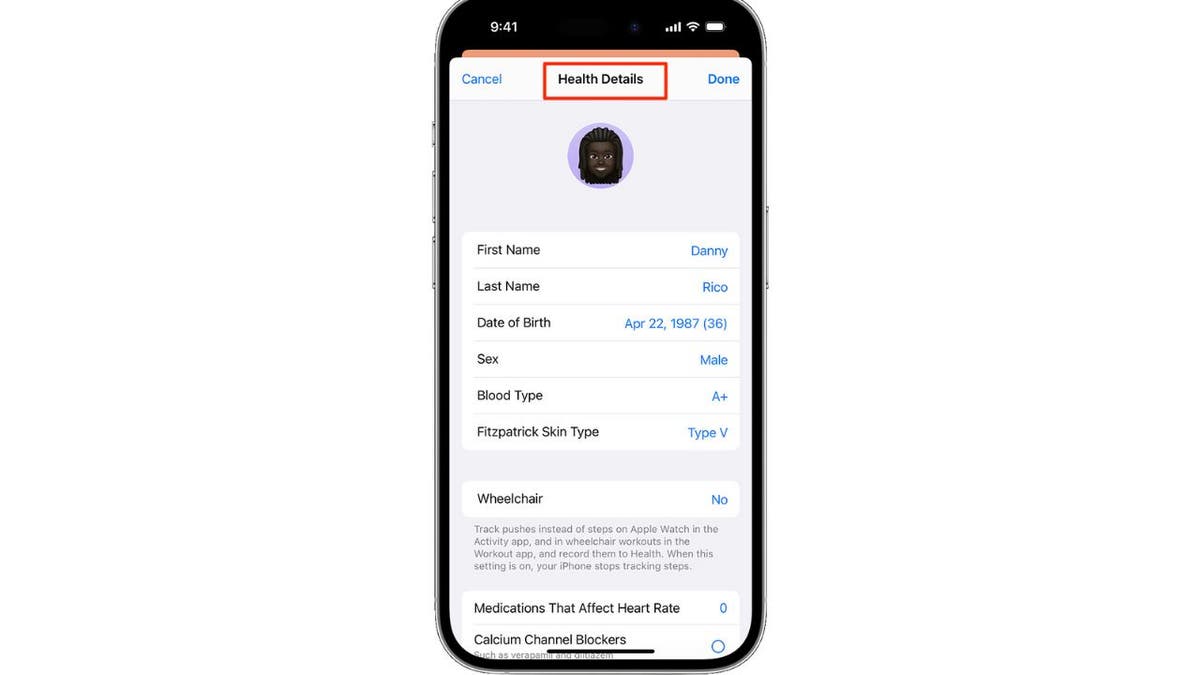
Health details on an iPhone. (Apple)
Manual Activation of Fall Detection on iPhone
If you are under age 55, you can manually enable this feature in your Apple Watch settings. Here’s how:
- Open the Watch app on your iPhone
- Go to the My Watch tab
- Select Emergency SOS
- Toggle on Fall Detection
- If Fall Detection is on, you can select Always on or Only on during workouts
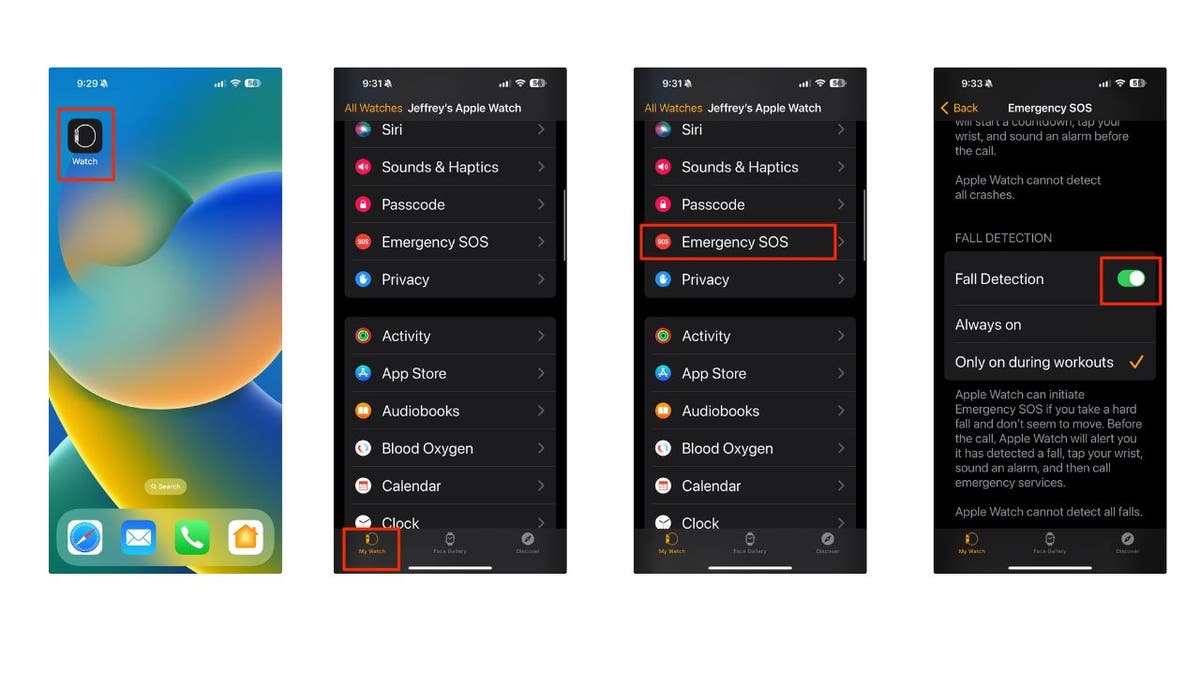
Steps to activate Fall Detection on Apple Watch. (Kurt “CyberGuy” Knutsson)
MORE: THE 3 RANDOM WORDS THAT COULD SAVE YOUR LIFE
These are the latest Apple watches offering fall-detection
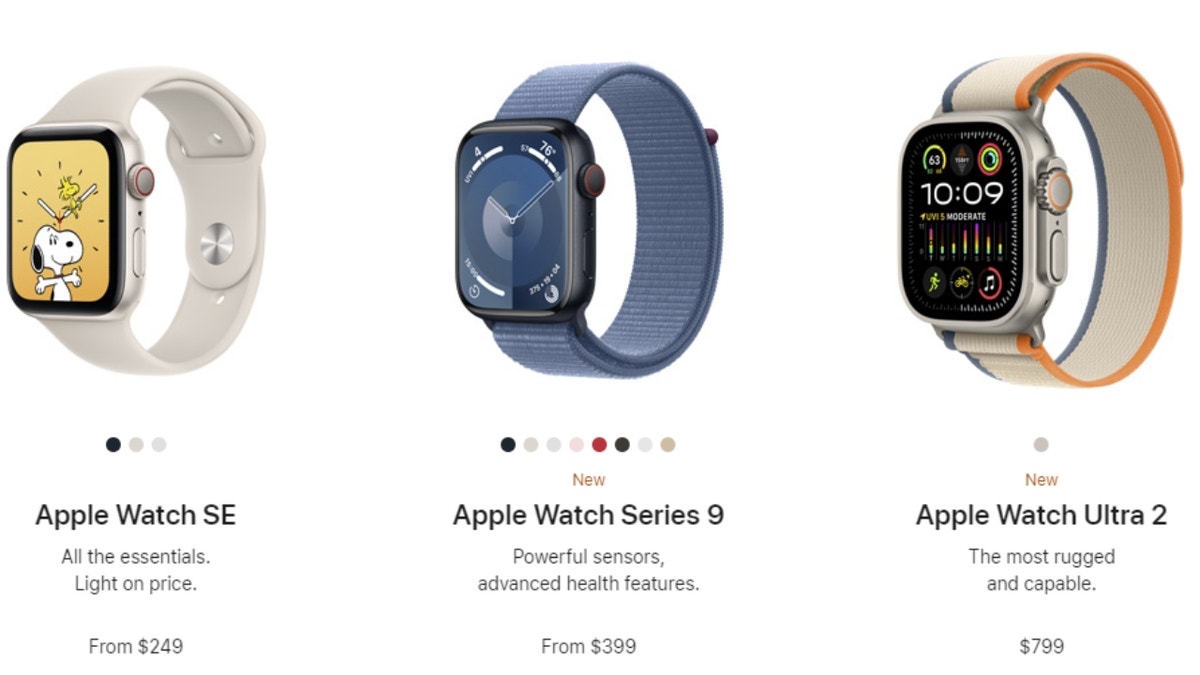
Apple Watches offering Fall Detection. (Apple)
Comparison of the latest Apple Watch models
Apple Watch SE – From $299 (GPS + Cellular), From $249 (GPS) – Features include a 44mm/40mm aluminum case, Retina display, S8 SiP, and various health and safety functions.
Apple Watch Series 9 – From $499 (GPS + Cellular), From $399 (GPS) – Offers a 45mm/41mm aluminum or stainless-steel case, Always-On Retina display, S9 SiP, and advanced health and safety features.
Apple Watch Ultra 2 – $799 (GPS + Cellular) – Features a 49mm titanium case, Always-On Retina display, S9 SiP, and comprehensive health, safety and sports functions.
MORE: APPLE WATCH SERIES 9 VS. ULTRA 2: WHICH ONE SHOULD YOU BUY?
Integration with iPhone 14 & 15
For iPhone 14 & 15 users, Fall Detection notifications can be communicated via the Emergency SOS via satellite system in areas without cellular or Wi-Fi coverage.
GET MORE OF MY SECURITY ALERTS, QUICK TIPS & EASY VIDEO TUTORIALS WITH THE FREE CYBERGUY NEWSLETTER — CLICK HERE
Kurt’s key takeaway
The Apple Watch is more than just a fancy gadget. It’s a lifesaver. With features like Fall Detection and Emergency SOS, it can sense when you need help and contact emergency services for you. This is why I believe that it’s worth spending a little extra to equip your Watch with the cellular connection option. It can also monitor your health and alert you if something is wrong, which makes it worth every penny as I know of no other consumer watch that can do anything remotely close to powerfully acting as a lifesaving rescue tool.
Has technology ever come to your aid? Is this a feature that would be important to you or someone you care about? Let us know by writing us at Cyberguy.com/Contact
For more of my tech tips and security alerts, subscribe to my free CyberGuy Report Newsletter by heading to Cyberguy.com/Newsletter
Ask Kurt a question or let us know what stories you’d like us to cover.
Answers to the most asked CyberGuy questions:
CyberGuy Best Holiday Gift Guide
Copyright 2023 CyberGuy.com. All rights reserved.

Technology
Junji Ito’s terrifying Uzumaki hits Adult Swim in September
/cdn.vox-cdn.com/uploads/chorus_asset/file/25547597/Screen_Shot_2024_07_26_at_3.55.30_PM.png)
Adult Swim’s long-awaited adaptation of Uzumaki finally has a premiere date — and an appropriately creepy trailer. The series, based on the classic horror manga from Junji Ito, will start airing on September 28th. Episodes will hit Adult Swim first, and then stream on Max the following day.
Uzumaki follows a cursed town that is — and I promise it’s scarier than it sounds — plagued by spirals. Here’s the full synopsis:
“Let’s leave this town together,” asks Shuichi Saito, a former classmate of Kirie Goshima, a high school girl who was born and grew up in Kurouzu-cho. Everything from a strange whirlwind, billowing smoke from the crematorium, and the residents is turning into spirals. People’s eyes spin in whirls, a tongue spirals, and the…
Continue reading…
Technology
New prosthetics restore natural movement via nerve connection
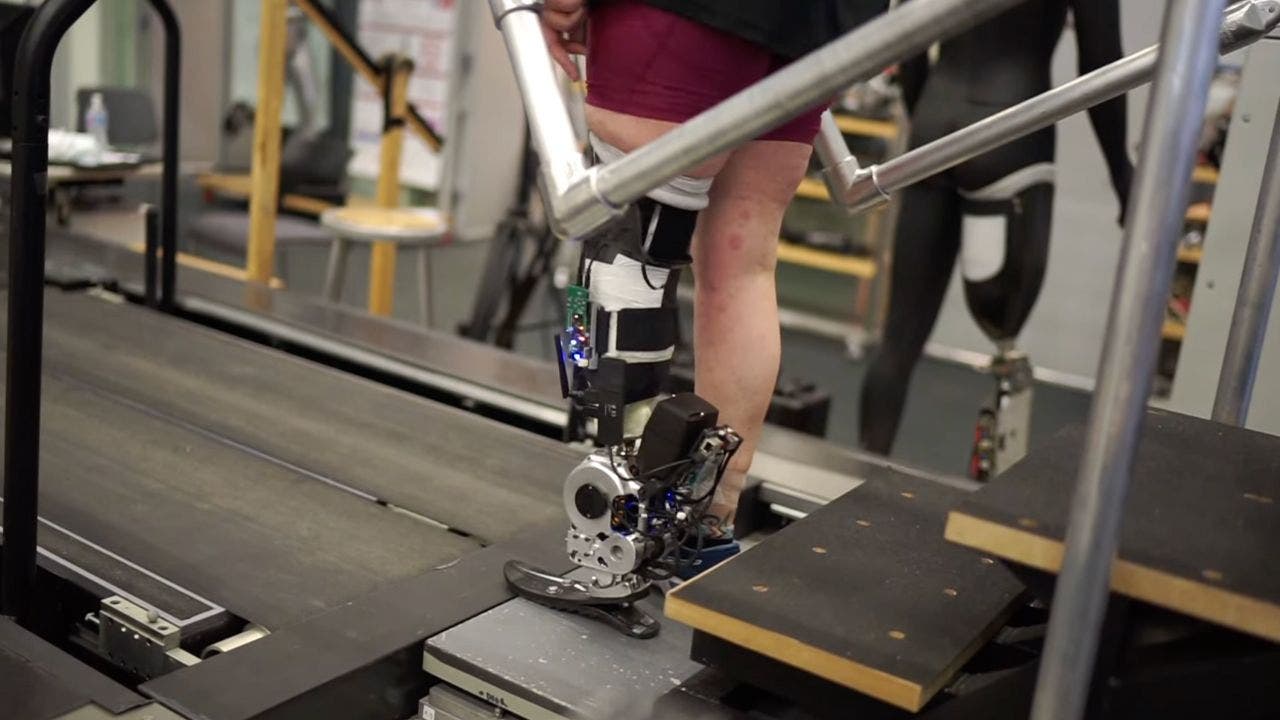
In the world of prosthetics, a groundbreaking advancement is changing the game for individuals with lower-limb amputations.
Researchers at MIT, in collaboration with Brigham and Women’s Hospital, have developed a neuroprosthetic system that allows users to control their prosthetic legs using their own nervous systems.
This innovative approach could bring us closer to a future of fully integrated, naturally controlled artificial limbs.
GET SECURITY ALERTS, EXPERT TIPS – SIGN UP FOR KURT’S NEWSLETTER – THE CYBERGUY REPORT HERE
A person wearing the neuroprosthetic system (Hugh Herr and Hyungeun Song)
The AMI: A surgical game-changer
At the heart of this breakthrough is a surgical procedure known as the agonist-antagonist myoneural interface, or AMI. Unlike traditional amputation methods, the AMI reconnects muscles in the residual limb, preserving the natural push-pull dynamics of muscle pairs. This seemingly simple change has profound implications for prosthetic control and function.

Illustration of how the neuroprosthetic system works (MIT Media Lab)
Dr. Hugh Herr, a professor at MIT and senior author of the study, explained the significance: “This is the first prosthetic study in history that shows a leg prosthesis under full neural modulation, where a biomimetic gait emerges. No one has been able to show this level of brain control that produces a natural gait, where the human’s nervous system is controlling the movement, not a robotic control algorithm.”
HOW TO STOP ANNOYING ROBOCALLS
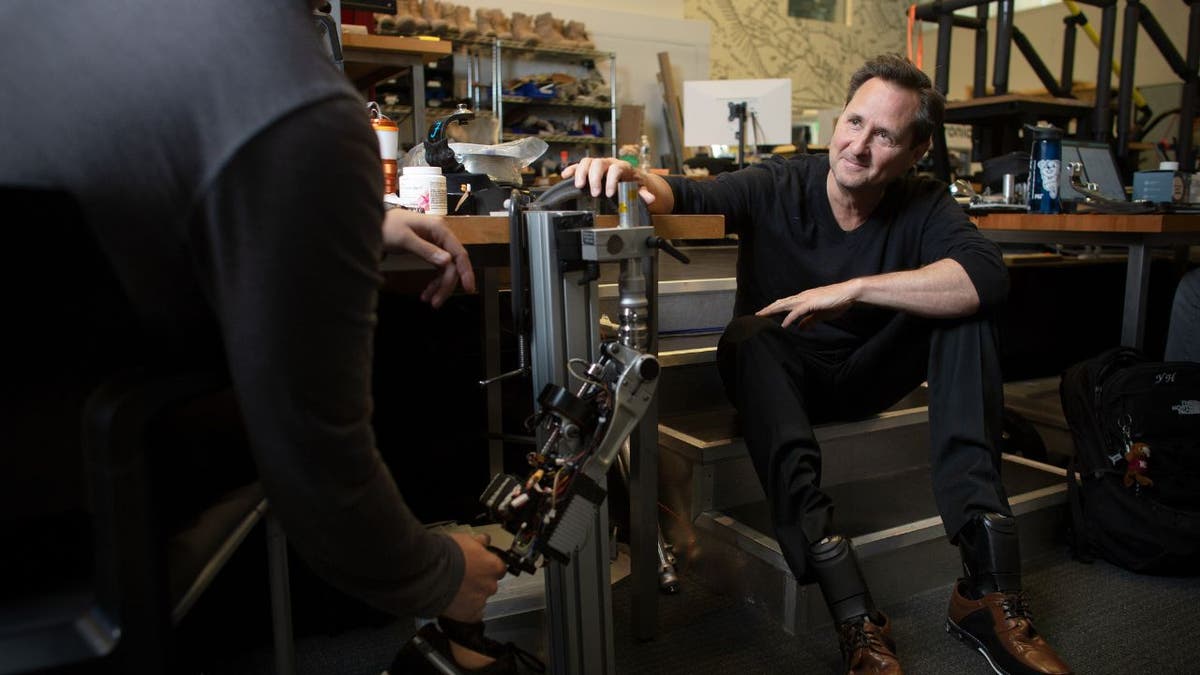
Dr. Hugh Herr pictured with the neuroprosthetic system (Jimmy Day, MIT Media Lab)
AI-DRIVEN EXOSKELETON LIGHTENS YOUR LOAD AND ELEVATES PERFORMANCES
The power of proprioception
The key advantage of the AMI system is its ability to provide users with proprioceptive feedback, the sense of where their limb is in space. This sensory information, often taken for granted by those with intact limbs, is crucial for natural movement and control. With the AMI, patients regain a portion of this vital feedback, allowing them to walk more naturally and confidently.
In the study, seven patients with AMI surgery were compared to seven with traditional amputations. The results were striking. AMI patients walked faster, navigated obstacles more easily and climbed stairs with greater agility. They also demonstrated more natural movements, such as pointing their toes upward when stepping over obstacles, a subtle but important aspect of a natural gait.
CYBERCRIMINALS TAKING ADVANTAGE OF CROWDSTRIKE-LINKED GLOBAL COMPUTER OUTAGE

A person wearing the neuroprosthetic system (Hugh Herr and Hyungeun Song)
CLICK HERE FOR MORE US NEWS
Adapting to real-world challenges
One of the most impressive aspects of the AMI system is its versatility. Patients were able to adapt their gait to various real-world conditions, including walking on slopes and navigating stairs. This adaptability is crucial for everyday life, where terrain and challenges can change rapidly.
The system’s responsiveness was put to the test in an obstacle-crossing trial. AMI patients were able to modify their gait to clear obstacles more effectively than those with traditional prosthetics. This ability to rapidly adjust to unexpected challenges is a hallmark of natural limb function and represents a significant leap forward in prosthetic technology.

A person wearing the neuroprosthetic system (Hugh Herr and Hyungeun Song)
AI WEARABLE CONTRAPTION GIVES YOU SUPERHUMAN STRENGTH
The science of sensory feedback
The success of the AMI system hinges on its ability to augment residual muscle afferents, which are the sensory signals sent from muscles to the nervous system. Remarkably, even a modest increase in these signals allows for significantly improved control and function. This finding highlights the incredible adaptability of the human nervous system and its ability to integrate and utilize even partial sensory information.
Dr. Hyungeun Song, lead author of the study, notes: “One of the main findings here is that a small increase in neural feedback from your amputated limb can restore significant bionic neural controllability, to a point where you allow people to directly neurally control the speed of walking, adapt to different terrain and avoid obstacles.”

A person wearing the neuroprosthetic system (Hugh Herr and Hyungeun Song)
Looking to the future
While this research represents a significant step forward, it’s just the beginning. The team at MIT is exploring ways to further enhance sensory feedback and improve the integration between the human nervous system and prosthetic devices. The AMI procedure has already been performed on about 60 patients worldwide, including those with arm amputations, suggesting broad applicability across different types of limb loss.
As this technology continues to evolve, we may see even more natural and intuitive control of artificial limbs. The ultimate goal is to create prosthetics that feel and function like a natural part of the user’s body, blurring the line between human and machine.
SUBSCRIBE TO KURT’S YOUTUBE CHANNEL FOR QUICK VIDEO TIPS ON HOW TO WORK ALL OF YOUR TECH DEVICES
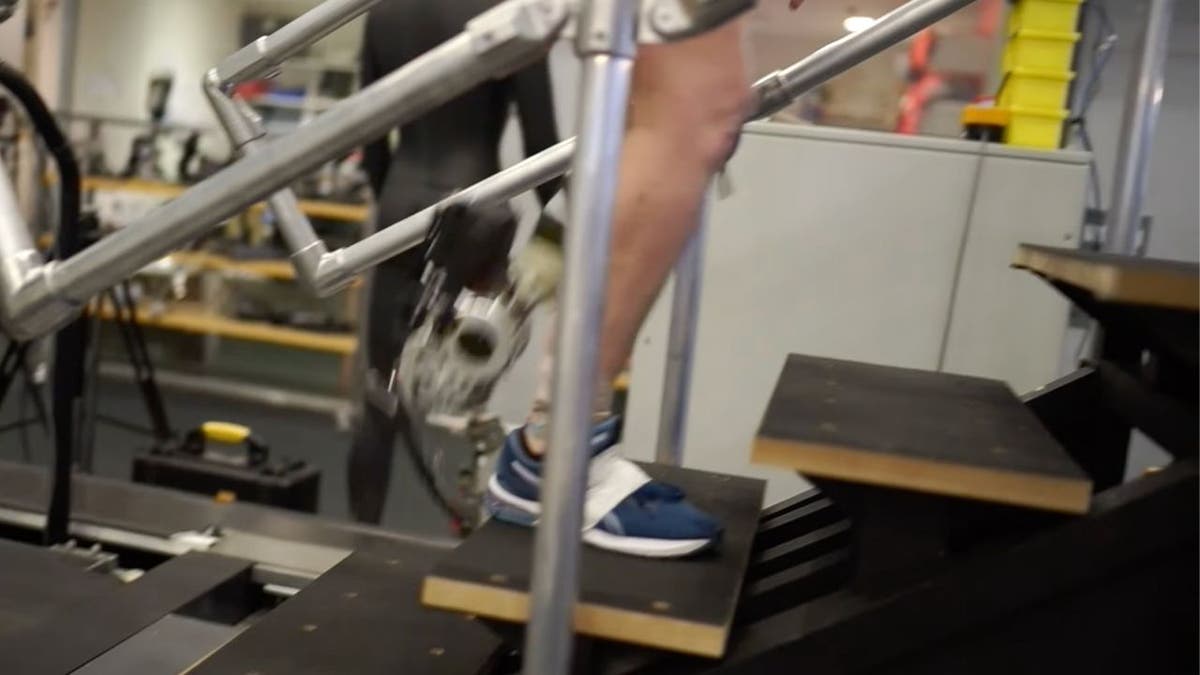
A person wearing the neuroprosthetic system (Hugh Herr and Hyungeun Song)
Kurt’s key takeaways
The development of prosthetic limbs controlled by the nervous system marks the beginning of a new era in bionics. It offers hope for improved mobility, independence and quality of life for millions of people living with limb loss. Moreover, it provides valuable insights into the plasticity of the human nervous system and our ability to integrate with advanced technology.
As we continue to push the boundaries of what’s possible in merging biology and technology, we open up new frontiers in human augmentation and rehabilitation. The implications extend far beyond prosthetics, potentially influencing fields such as neurology, robotics and even our understanding of human consciousness and embodiment.
How comfortable would you be with technology that directly interfaces with your nervous system? Let us know by writing us at Cyberguy.com/Contact.
For more of my tech tips and security alerts, subscribe to my free CyberGuy Report Newsletter by heading to Cyberguy.com/Newsletter.
Ask Kurt a question or let us know what stories you’d like us to cover.
Follow Kurt on his social channels:
Answers to the most asked CyberGuy questions:
Copyright 2024 CyberGuy.com. All rights reserved.
Technology
Here’s your first look at Amazon’s Like a Dragon: Yakuza
/cdn.vox-cdn.com/uploads/chorus_asset/file/25547838/YAKZA_3840_2160_A_Elogo.jpg)
Amazon says that the show “showcases modern Japan and the dramatic stories of these intense characters, such as the legendary Kazuma Kiryu, that games in the past have not been able to explore.” Kiryu will be played by Ryoma Takeuchi, while Kento Kaku also starts as Akira Nishikiyama. The series is directed by Masaharu Take.
Like a Dragon: Yakuza starts streaming on Prime Video on October 24th with its first three episodes.
-

 World1 week ago
World1 week agoOne dead after car crashes into restaurant in Paris
-

 Midwest1 week ago
Midwest1 week agoMichigan rep posts video response to Stephen Colbert's joke about his RNC speech: 'Touché'
-

 News1 week ago
News1 week agoVideo: Young Republicans on Why Their Party Isn’t Reaching Gen Z (And What They Can Do About It)
-

 Movie Reviews1 week ago
Movie Reviews1 week agoMovie Review: A new generation drives into the storm in rousing ‘Twisters’
-

 Politics1 week ago
Politics1 week agoFox News Politics: The Call is Coming from Inside the House
-

 News1 week ago
News1 week agoVideo: J.D. Vance Accepts Vice-Presidential Nomination
-

 World1 week ago
World1 week agoTrump to take RNC stage for first speech since assassination attempt
-

 News1 week ago
News1 week agoRNC speakers want to separate the president from the person to show softer side of Trump

















